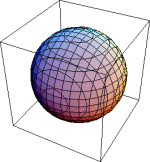 I’ve been watching videos about Maya scholar Dr. David Stuart’s deciphering breakthroughs.
I’ve been watching videos about Maya scholar Dr. David Stuart’s deciphering breakthroughs.
Wondering from this whether pre-modern priesthoods might have had globular thinkers (at the very least, different thinkers of any kind)?
Might Maya priestly scribes have imagined the placement of glyphs as a 3, 4, or 5-dimensional view of space, and used this to instruct lay scribes how to write the sacred texts?
A globular thinker could, with a writing implement, sketch the writing plan for a scribe, with cypher clues to hidden text among visible text. If a caste of lay scribes was selected for globular thinking ability, they could write the system directly, but this limits the priesthood’s ability to mystify (all priestly academies impose hierarchical limits, to create the means to demand gifts, obedience, and favours from “the lesser-than’s”).
Such a language . . . might be visualized as cylindrical, with the nested Long-Count wheels as the “end(s)” of the cylinder.
Or, it might be spherical or globular, which in our Western view might be visualized as an x-y-z coordinate system, or more properly as a latitudinal-longitudinal -declination (globular) coordinate system.
Such expertise is rare, and in a theocracy, would be a way to restrict “sacred knowledge” simply because of the inability of “flat” (2D)-language thinkers—the vast majority of the population, including the transcribing scribes, and the lesser priestly ranks—to comprehend the reading ability of the few with this cognitive skill set.
In all practicality, very few people anywhere think globularly/spatially; and because it is a rare way of thinking, the effect is that this ability becomes a form of encryption.
Our writing systems and social concept of time . . . varies to the intellectual tradition of the society where we live. The Western tradition is deeply informed by the historical view we have of time marching forward.
We look to yesterday and look to tomorrow – a linear progression, where since Adam Smith‘s day we developed the industrialized idea of progress — that things always get better. Other cultural/religious traditions imagine time as circular – a wheel of time.
So what about globular time and imagination?
Is this a thinking cypher that might unlock a variety of heretofore incomprehensible languages?
Dave Huer
Glyph Image by Xenophon (Wolfgang Sauber). License Creative Commons CC-BY-SA-3.0,2.5,2.0,1.0 via wikipedia
Sphere Image by Yaroslav Bulatov at his blog

